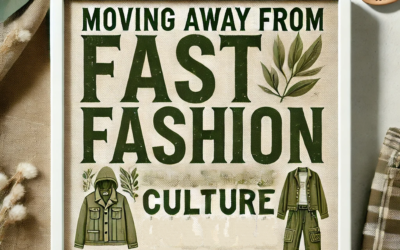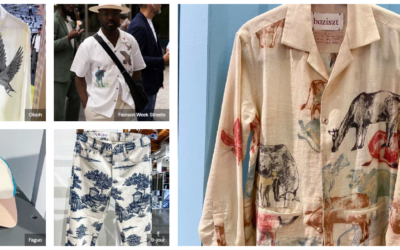Fast fashion vs slow fashion is like yin and yang in the arena of fashion world. Though the terms are completely opposite, there is a need of sensing their difference and concretely know which means what- fast fashion vs slow fashion-what are the differences, fast fashion and slow fashion brands, which fashion to choose when, etc.
What comes to your mind when someone says fast fashion vs. slow fashion?
On the surface, fast and slow fashion seem pretty straightforward, but in reality, they can both be complex within the realm of sustainable fashion. Today we will cater you a case study on fast fashion vs slow fashion where you will find the differences and a comparative study to ponder on.
[Attention! Read the full article. There is a fun quiz to check your knowledge about fast fashion vs slow fashion]
According to Google Trends, the highest interest in this topic was in April 2009 and the second highest interest is on October 2021.
What is fast fashion?
Fast Fashion is the process of imitating trends and styles from the big-name designers on the runway which is most of the time lower quality, cheap priced and not handmade. Manufacturers mass-produce the garments at lightning speed to beat the competition and keep up with customer expectations. Since the Clothing is produced quickly and cheaply, hence we term it as fast fashion.
Fast fashion examples:
H&M, Zara, etc. retailing brands’ mass produced t-shirts, pants, etc.
Fast fashion vs Slow fashion brands:
Fast fashion and slow fashion brands also have differences according to their design, production, selling and operating criteria which enable us to do Fast fashion vs slow fashion brands comparison.
A list of fast fashion brands:
- Zara
- H&M
- Uniqlo
- Shein
- Stradivarius
- Mango
- Topshop
- Boohoo
- Forever 21
- Urban Outfitters
- Ripcurl
- Primark
- GUESS
- Missguided
- Pretty Little Thing
- Victoria’s Secret
Interest in the ‘Fast fashion’ topic according to Google Trends. Source: Screenshot taken from Google Trends.
What is Slow Fashion?
Slow fashion is about conscious shopping and wearing clothing with sustainability in mind. It is about designing, creating, and buying clothing that last a long time. Here quality matters over quantity and since the process takes place slowly, we term it as slow fashion.
`
Dhakai Muslin, an example of slow fashion
Slow fashion examples:
Handmade classical products like Jamdani, Dhakai Muslin, Nakshi kantha, etc. Moreover vintage and second hand clothes are also a part of slow fashion.
Slow fashion history:
The term ‘slow fashion’ is not so old. In fact, this term emerged in the year 2007 when journalist Kate Fletcher, a fashion and sustainability pioneer, coined the word “slow fashion” in an article published in the British publication-The Ecologist.
`
The photo of Kate Fletcher who coined the term ‘slow fashion’. Her name is now attached with the history of slow fashion.
Actually, the concept of slow fashion is inspired from the Slow Food Movement founded by Carlo Petrini in Italy in 1986 which links pleasure and food with awareness and responsibility.
After her coining out this term, it became a world trend and talk of the fashion world.
A list of slow fashion brands:
Is slow fashion more sustainable than fast fashion?
Slow fashion promotes a slower, steady and more sustainable approach as it is hand-made with sustainable raw materials like lotus, banana, orange fiber and promotes the use of vintage or second hand clothes, upcycling old clothing materials. It decreases carbon footprint and takes care of the 3Ps of sustainability- People, planet and profit.
Comparing the benefits of slow fashion and fast fashion
- Slow fashion reduces the consumption of resources and the amount of wasteland people can wear for a long time because they are made up of durable materials but is not cost efficient.
- Fast fashion quickly responds to rapidly-changing fashion trends and consumer tastes.It carries high-end designs to the masses at affordable price ranges.
Fast fashion vs slow fashion Google Trends. The interest and talk of fast fashion was always more than slow fashion from the beginning. Source: Google Trends.
Let’s compare the problems faced
- In Slow fashion small quantities are produced at low speed and hence are not able to compete with the economy of scale strategy. And generally, the products are more expensive than the commodities.
- Due to the greater manufacturing speed, the factories are likely to neglect the working conditions. The low quality and low pricing of the products results in the increase of fashion waste
Comparing the production schedules
Slow fashion has 2-3 cycles per annum whereas fast fashion has approx. 50+ cycles per annum. We can clearly see the production scale of fast fashion is near 25 times of the slow fashion !!!
Comparing the fashion sales
We can see the graph of slow fashion is very low at the beginning, but gradually the graph of slow fashion can be seen increasing, which means slowly people are understanding the importance of slow fashion. Though the graph of fast fashion is increasing rapidly because people always prefer cheaper prices over quality clothing.
Fast fashion vs slow fashion in India (USD Million).
| Fast Fashion | Slow Fashion | |
| Production | Rapid and mass production | Slow and deliberate production |
| Design Approach | Trend-driven and short-lived designs | Timeless and enduring designs |
| Manufacturing | Outsourcing to low-cost labor countries | Emphasis on local, ethical manufacturing |
| Material Selection | Synthetic materials and low-cost fabrics | Natural, organic, and sustainable materials |
| Environmental Impact | High pollution and waste generation | Focus on sustainability and eco-friendliness |
| Consumer Behavior | Impulse buying and frequent purchases | Conscious consumption and fewer purchases |
| Supply Chain | Lack of transparency and unethical practices | Ethical sourcing and transparent supply chain |
| Social Responsibility | Exploitation of low-wage workers | Fair wages and labor rights |
| Longevity | Disposable fashion with short lifespan | Durable garments designed for longevity |
A table showing the differences between fast fashion and slow fashion.
Conclusion
After looking at the facts & surveys we can say that:
- Fast fashion creates a lot of wastage and hence is quite harmful to the environment hence slow fashion should be promoted more in order to maintain sustainability
- But when looking at the prices fast fashion is more preferable due to it’s cheaper prices.
But in the end, it depends on what the customer wants and what he prefers. It has to be either quality products/cheaper prices.
Nandini Kapu
Student at NIFT- National Institute of Fashion Technology
(NB. This article was written by Nandini Kapu. It has been updated and will be updated by Fashionnovation whenever we find new relevant information to make it rich so that the information best serves you. So, stay with Fashionnovation!)
You can also read another of our premium article on Fashion in the 21st century here!
Related articles:
If you want to know the most influential US fashion Brands and Germany Fashion Brands, you can click accordingly!
Feel free to write to us at fashionnovationfd@gmail.com
We accept guest posts!




Informative Article, good keep it up dear